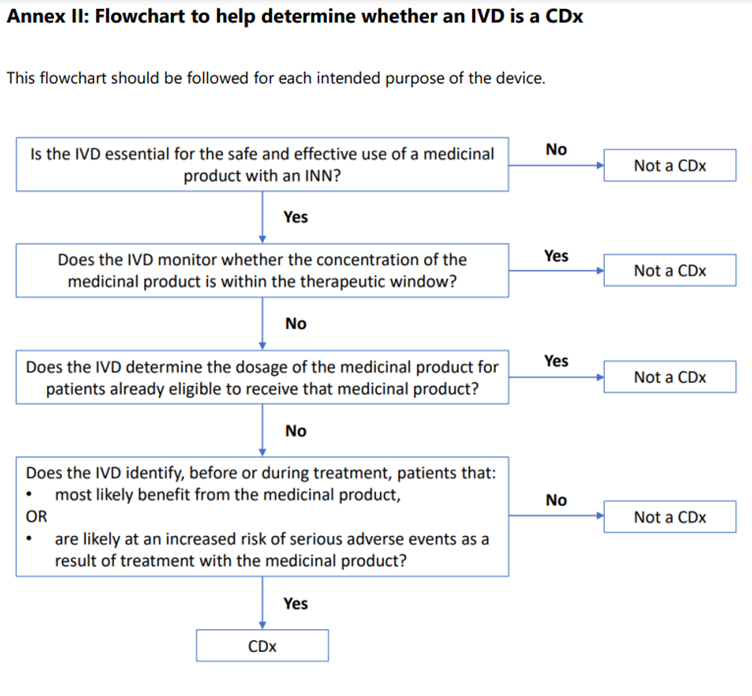On February 14th, 2023, the Medical Device Coordination Group (MDCG) released a second revision on the guidance for Classification Rules for in vitro Diagnostic Medical Devices under Regulation (EU) 2017/746. This second revision now provides more clarification and examples of which devices are not considered as companion diagnostics (CDx) and is also supplemented with a decision flowchart to help you decide if your device qualifies as a CDx (MDCG 2020-16 Rev2).
For this second edition, the most important update is that rule 3(f) on Devices intended to be used as companion diagnostics has been revised. Examples on devices that are not to be considered as CDx have been included (e.g. devices intended for blood glucose monitoring, devices intended for measurement of cyclosporine concentration in blood, devices intended for measurement of metabolites of a medicinal product).
Devices intended to determine quantitative or qualitative specific marker(s) to establish the dosage of a particular medicinal product, for patients that are already eligible to receive that medicinal product, are not considered to be CDxs. For example, devices intended to measure creatinine concentration can be used for estimating kidney function to determine the optimal dosage of medicinal products with renal elimination. Another example is devices identifying CYP2D6 or CYP2C19 genotypes of a patient to determine the appropriate dosage of an already prescribed medication.
In addition, more examples have been added to the guidance document:
General CDx examples:
- A device intended to identify a marker (receptor, transporter, other protein-based biomarker or its variant) specifically targeted by the corresponding medicinal product.
- …
Specific examples:
- A device intended for the qualitative detection of anaplastic lymphoma kinase (ALK) protein in formalin-fixed, paraffin-embedded (FFPE) non-small cell lung carcinoma (NSCLC) tissue, intended as an aid in identifying patients eligible for treatment with crizotinib or ceritinib.
- A next-generation sequencing (NGS) based device to evaluate KRAS/NRAS genetic variants to determine the presence of mutations affecting the efficacy of vectibix for treatment of metastatic colorectal cancer
- …
Last, in Annex 2 of the guidance a flowchart has been included to help you decide if your device is a CDx or not:

What does this mean to you?
MDCG 2020-16 Rev2 is of relevance for everybody involved in companion diagnostics.
Should you want to discuss this more in depth with one of our consultants, please do not hesitate to get in touch with us.

